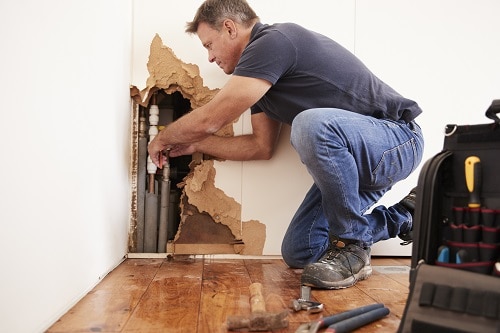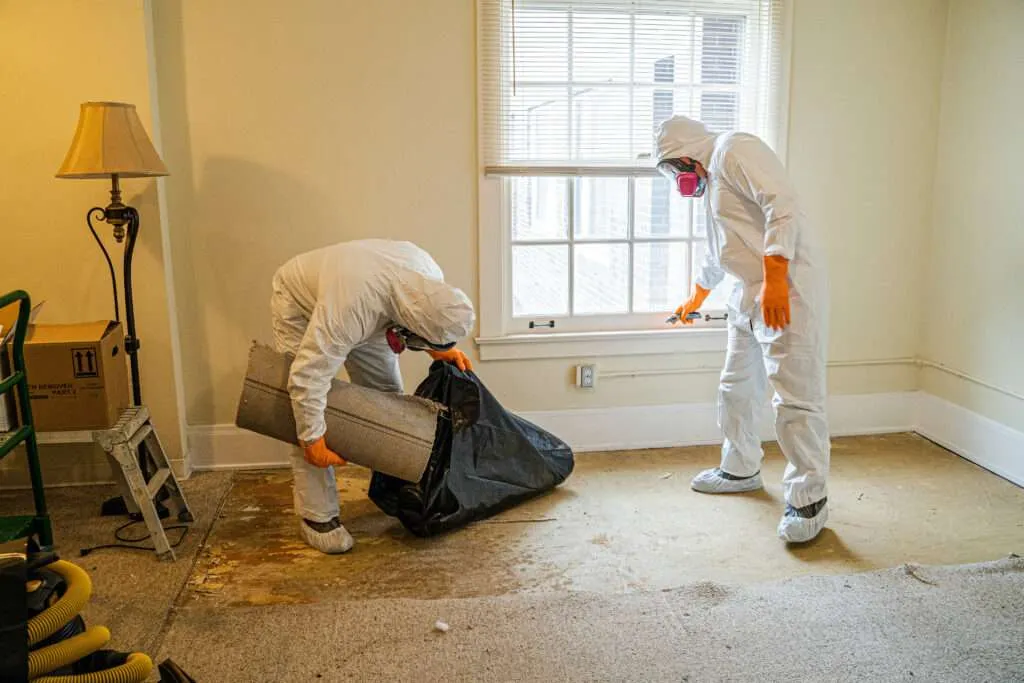Water Damage Restoration 101: Recognizing the Process and Expense
Water damage can strike suddenly, leaving homeowners in a state of complication. Comprehending the remediation process is important for effective healing. From assessing the damage to choosing the best solution company, each step impacts the overall outcome and expense. Aspects such as the sort of water damage and seriousness also play a significant function. What are the specific methods used in repair, and how can one plan for potential expenses?
Kinds Of Water Damage

Initial Analysis and Inspection

Water Removal Techniques
Complying with the first assessment, efficient water extraction strategies are utilized to reduce damage and prevent more problems. These strategies include using specialized tools such as completely submersible pumps and industrial-grade vacuum cleaners - Water Damage Restoration. The selection of method depends upon the quantity of water present and the kind of materials affected. For standing water, submersible pumps are typically made use of for fast removal, while vacuum cleaners are optimal for drawing out water from carpets and furniture. Furthermore, advanced techniques like water extraction floor coverings may be used for hard-to-reach areas - Water Damage Restoration. The objective is to remove as much water as feasible, decreasing the capacity for mold and mildew growth and architectural damage. Motivate and efficient water removal is important in the general water damage repair procedure
Drying Out and Dehumidification Process
As soon as the water removal is total, the drying out and dehumidification process comes to be important to recovering the affected location. This stage usually employs industrial-grade dehumidifiers and air moving companies to properly lower dampness levels. The dehumidifiers reel in moist air, removing excess moisture, while air moving companies circulate air to speed up dissipation. Monitoring devices is frequently made use of to track moisture and temperature levels, ensuring suitable drying problems. The period of this procedure can vary relying on the extent of the water damage and environmental factors. It is vital to extensively dry all impacted materials, consisting of wall surfaces, flooring, and furnishings, to stop mold and mildew development and structural damage. Appropriate implementation of this step is critical for an effective reconstruction result.
Cleaning and Sterilizing Afflicted Locations
An extensive initial assessment and examination of affected areas is essential to identify contamination levels once the drying process is complete. Water Damage Restoration. Reliable cleansing strategies and ideal items must after that be used to get rid of particles and stains. Sanitization and sanitation approaches are crucial to assure that hazardous pathogens are removed, bring back the area to a safe condition.
Preliminary Assessment and Examination
Prior to beginning any type of reconstruction efforts, a thorough first analysis and assessment of the affected areas are vital for efficient cleansing and sanitizing. This procedure involves determining the degree of water damage, identifying the source of the water intrusion, and assessing the materials impacted. Assessors typically look for signs of mold and browse around this web-site mildew growth, structural integrity concerns, and harmed valuables. The analysis additionally consists of inspecting wetness degrees using specific equipment to ensure no covert water pockets remain, as these can cause more problems. Recording the searchings for is crucial for planning the following action in the remediation procedure. An in-depth initial analysis enables restoration specialists to develop a targeted strategy for efficient cleansing and sanitizing, eventually minimizing damage and wellness threats.
Cleansing Methods and Products
Efficient cleansing and disinfecting of water-damaged locations require a variety of techniques and items customized to the details products impacted. For porous surfaces like drywall and carpeting, extraction techniques are vital to eliminate excess moisture, complied with by deep cleansing with specialized detergents. Non-porous materials such as ceramic tile or metal can be cleaned making use of commercial-grade cleaners that properly eliminate contaminants. Steam cleaning is one more effective technique, specifically for carpets and furniture, as it makes use of heats to remove germs and mold (Water Damage Restoration). Additionally, environment-friendly products are increasingly popular for their safety and efficacy - Water Damage Restoration. Inevitably, picking the appropriate cleansing approaches and products not only guarantees immediate sanitation however likewise aids in stopping additional damage and health and wellness dangers connected with water invasion
Sanitization and Disinfection Methods
When resolving water damage, appropriate sanitization and disinfection methods are necessary to ensure the safety and health of the affected atmosphere. After first cleaning, surfaces have to be treated with appropriate disinfectants to eliminate microorganisms, mold, and bacteria that prosper in damp problems. Typical approaches include making use of EPA-approved chemical disinfectants, which can be used via spraying or wiping strategies. Additionally, ultraviolet (UV) light systems can efficiently disinfect locations by neutralizing microorganisms without harsh chemicals. The selection of technique frequently depends on the kind of products influenced and the extent of contamination. Ultimately, extensive sanitization not only restores a secure living area but additionally helps protect against future wellness threats connected with remaining dampness and mold and mildew development.

Repair Work and Restoration Options
Evaluating the damage brought on by water exposure is crucial for establishing the proper fixings and remediation options. Home owners may deal with different problems, consisting of damaged drywall, distorted floor covering, and compromised architectural elements. Depending on the degree of the damage, fixings might include replacing areas of drywall, setting up brand-new floor covering, or reinforcing architectural light beams. In cases of severe damage, total replacement of afflicted materials could be necessary. Additionally, expert conservators usually suggest utilizing dampness meters to evaluate hidden dampness levels before choosing the very best training course of activity. It is very important to act without delay to avoid mold and mildew development and more damage. Picking the best choices not only restores the building yet additionally assures long-lasting safety and security and capability.
Aspects Influencing Restoration Costs

The extent of water damage straight impacts the repair costs house owners can anticipate to sustain. Elements such as the resource of the water, the duration of direct exposure, and the affected materials substantially influence rates. Clean water damage from a damaged pipe is normally less costly to restore contrasted to damage created by sewage. Furthermore, the degree of contamination determines the need for specialized cleaning and disposal solutions, better increasing costs. Geographical area also contributes, as local labor rates and accessibility of restoration solutions can vary. The seriousness of the action influences prices; quicker treatments commonly lead to reduce general expenses by protecting against more damage. Recognizing these aspects is essential for homeowners when estimating remediation costs.
The 3 key kinds of water damage are classified based on contamination levels: tidy water, grey water, and black water. A detailed initial analysis and examination are crucial actions in the water damage repair process. For standing water, submersible pumps are typically utilized for quick elimination, while vacuum cleaners are ideal for removing water from carpetings and upholstery. The extent of water damage straight influences the repair sets you back home owners can anticipate to incur. Tidy water damage from a busted pipe is generally much less pricey to recover compared to damage caused by sewer.